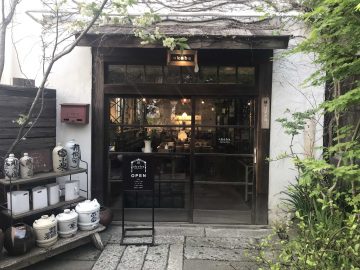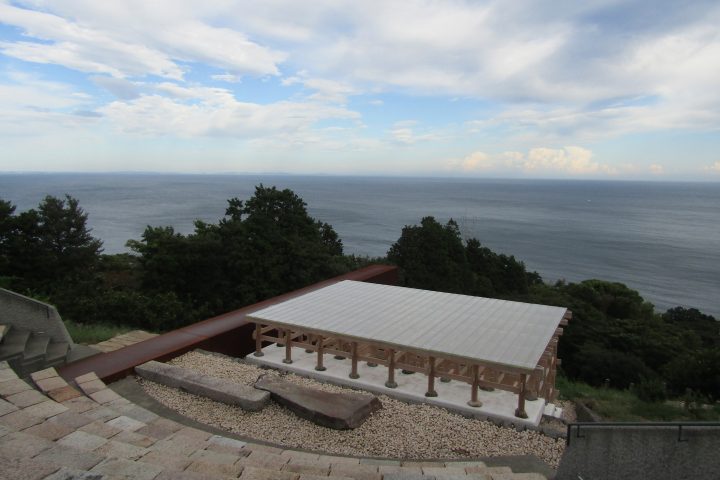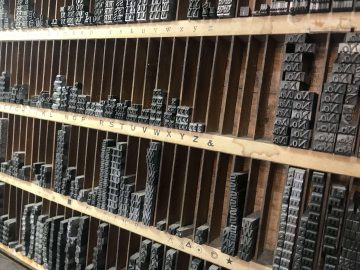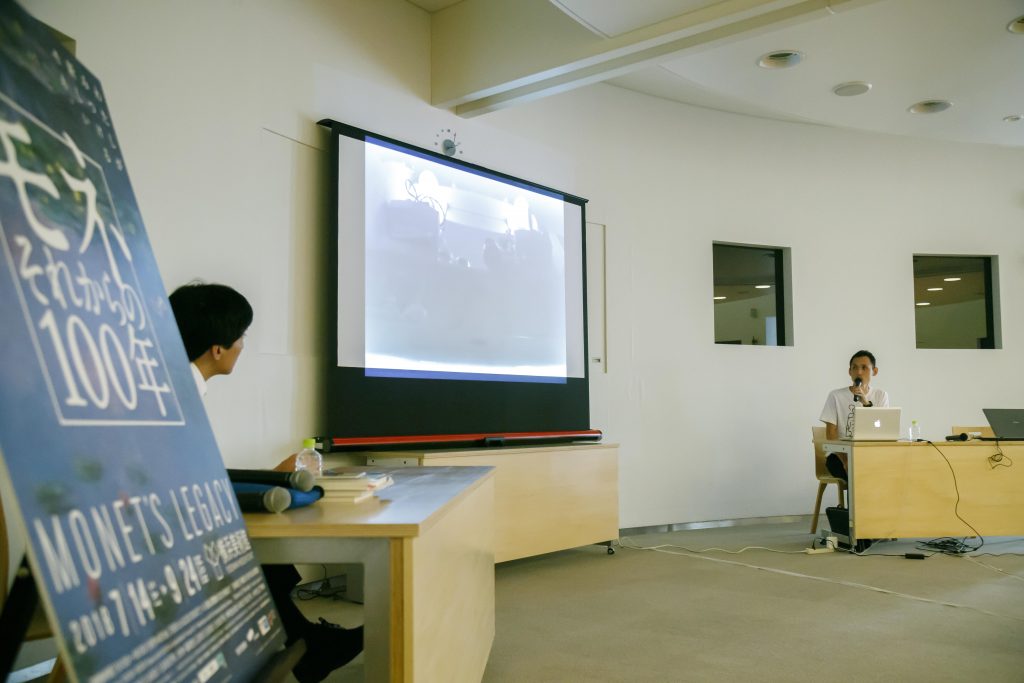
"Monet: The Next 100 Years"
Artist Talk
"Monet: The Next 100 Years" has opened at the Yokohama Museum of Art. Claude Monet (1840-1926) is one of the most popular painters in Japan. This exhibition brings together 25 of Monet's paintings with 66 works by 26 artists of later generations, in an attempt to highlight the timeless connection between the two.
On the first day of the opening, Saturday, July 14th, an artist talk was held in the museum's circular forum by two of the exhibiting artists and a curator.
The two artists featured are:
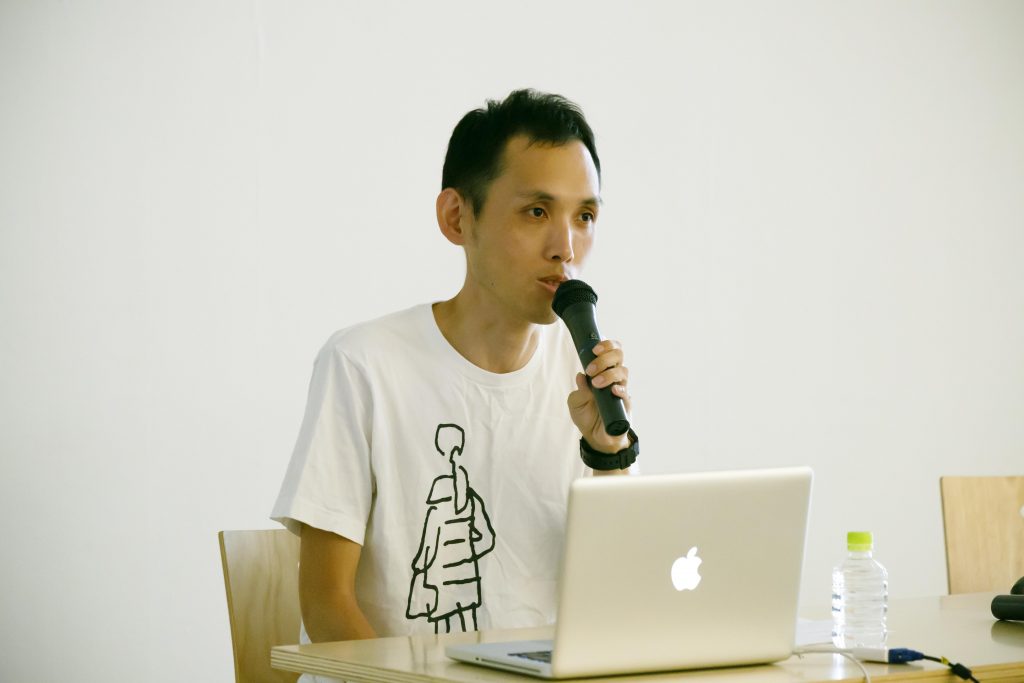
Katsunori Mizuno
Born in Mie Prefecture in 1982. Graduated from Nagoya Zokei University of Art and Design's Department of Fine Arts, General Art Course in 2005. Completed a Master's degree in Conceptual Design, Painting, at Kyoto City University of Arts in 2008. Recent major solo exhibitions include "Lightscape" (Aichi Prefectural Museum of Art, 2011), "reflections" ("MOVING 2015" Kyoto Art Center, 2015), and "non-fiction" (GALLERY CAPTION, 2016). Exhibited in "Waterscapes - From Monet and Taikan to the Present" (Yokohama Museum of Art, 2007).
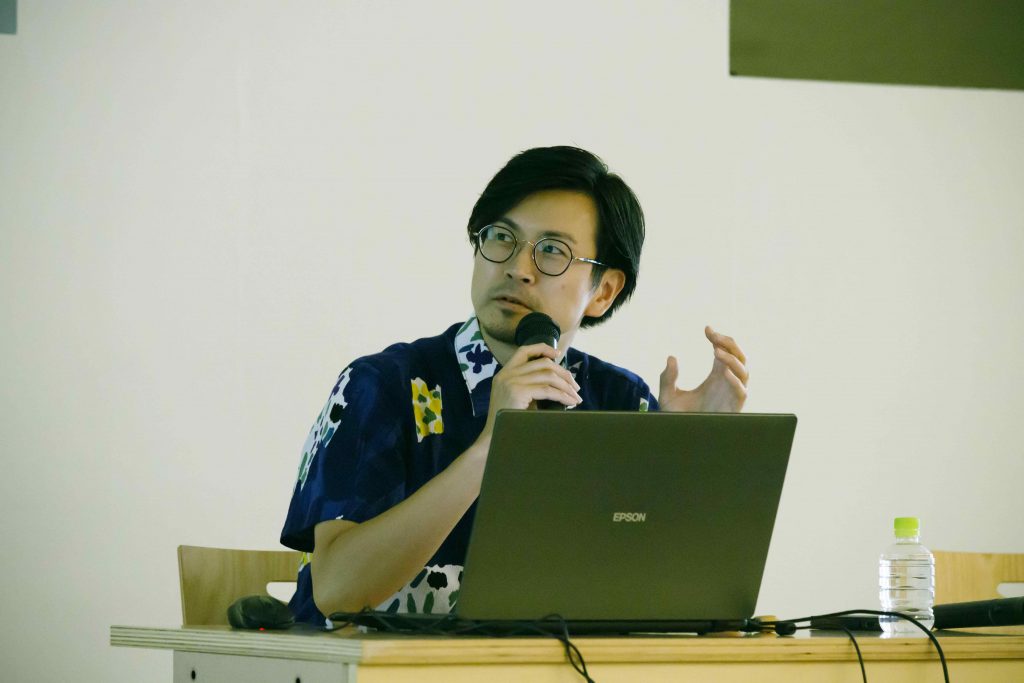 Katsutoshi Yuasa
Katsutoshi YuasaBorn in Tokyo in 1978. Graduated from Musashino Art University's Department of Oil Painting (Printmaking course) in 2002. Completed a Master's in Printmaking at the Royal College of Art in 2005. Recent major solo exhibitions include "All natural movements of the soul are governed by laws similar to those of gravity in matter" (YUKI-SIS, 2017), "Space, Wind, Scenery" (MYD Gallery, 2018), "Trace of Time in Thought" (Northern Print, 2018), etc. Exhibited in "Fascinating Japanese Woodblock Prints" (Yokohama Museum of Art, 2014).
The first half of the event began with a lecture in which the artist introduced his creative activities to date.
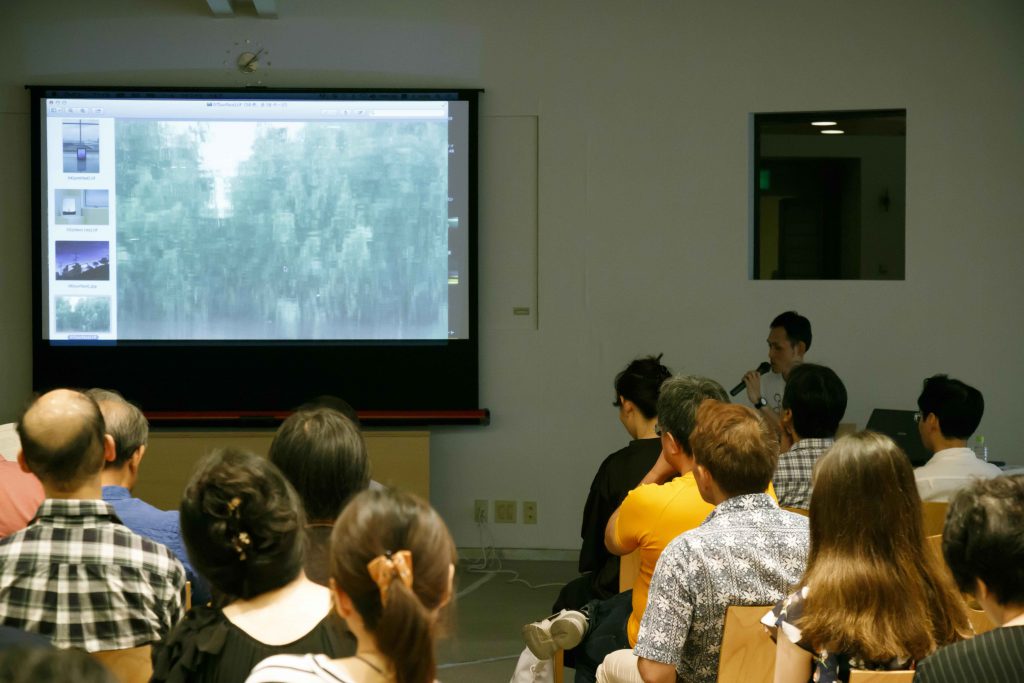
Mizuno began his creative endeavors by filming everyday scenes with a video camera, as if sketching them. From the beginning, he was interested in the "virtual images" reflected on the surface of the water, and he created his works by fixing the video camera and observing from a fixed point.
He mentioned that, due to his nature as a filmmaker, the creation and exhibition of his works are influenced by advances in technology, and when the screen size changed from 4:3 to high-definition 16:9, he felt that "this was an angle of view that reminded me of Japanese painting."
Mizuno was first drawn to Monet's work when he saw "Water Lilies" on display at the Chichu Art Museum in Naoshima. Facing the work in a simple white space bathed in natural light, he noticed how the appearance of the work changed with the time and the light, and it dawned on him that "this is what Monet wanted to do," and he wondered if he could do it himself.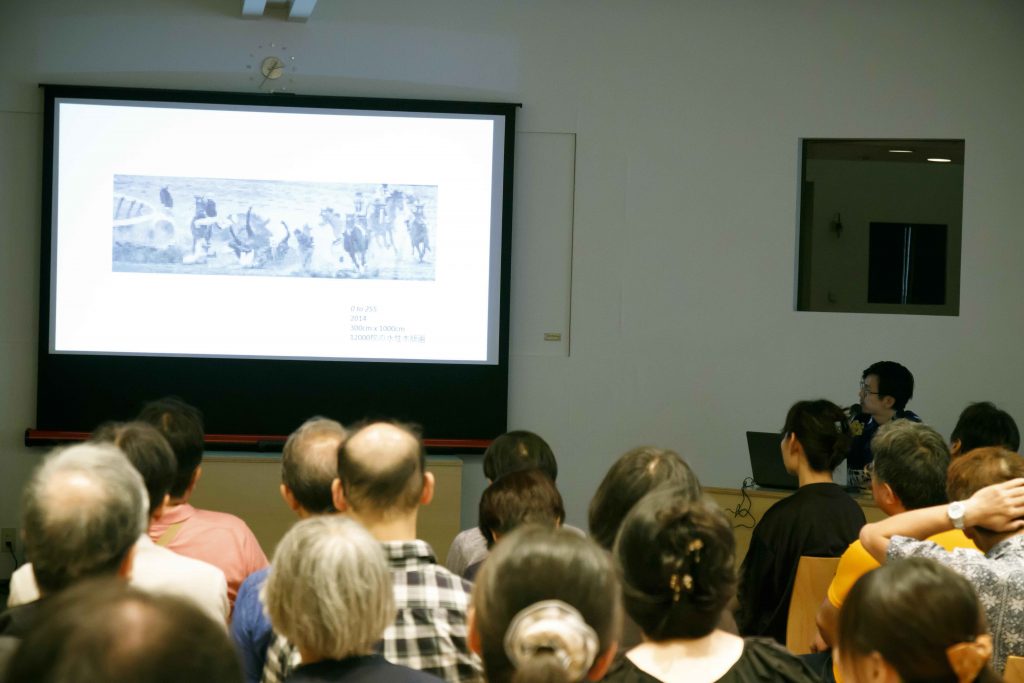
Yuasa is a printmaker who has been active in various countries around the world since studying abroad in London after graduating from art school. Even when producing large-scale works, he does not use a press, but instead places great importance on the process of carving the woodblocks and printing each print one by one using a baren.
His works, in which he carves photographed images into woodblocks, gradually changes the colors while imagining the changes over time, and prints them one after the other, evoke the world of Monet.
"I go to various places, see the scenery, take pictures, and create my works. Sometimes it's a hassle to go out (laughs), but I can't create works unless I go to various places. The technique doesn't change even if the place changes, but maybe some kind of change is needed within myself."
The second half of the event was a roundtable discussion moderated by Chief Curator Matsunaga Shintaro.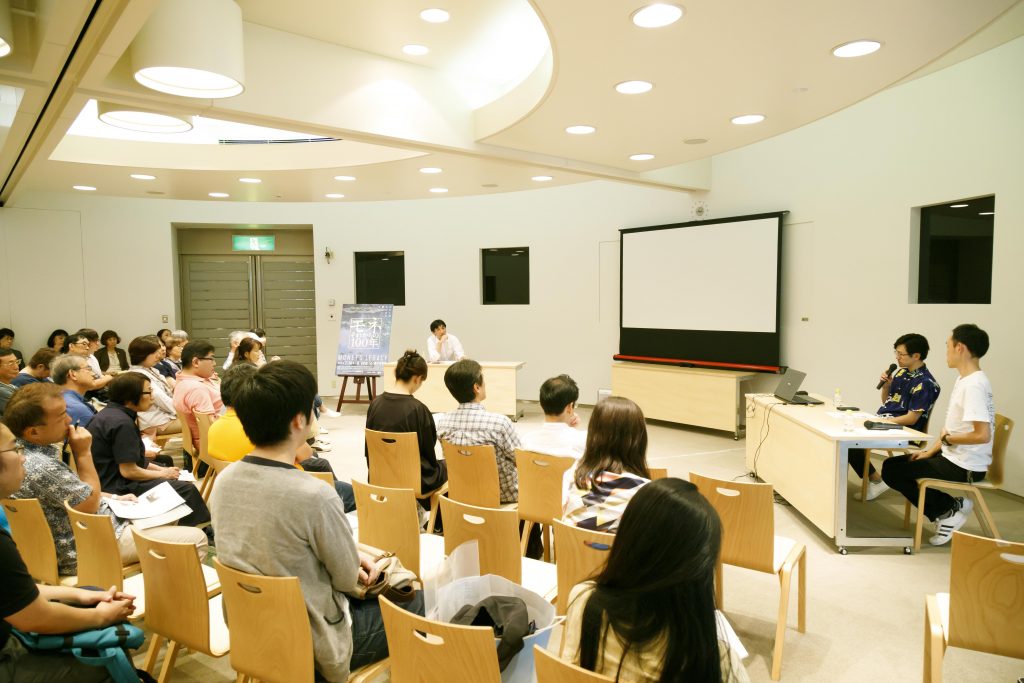
Matsunaga : This time, we have asked the two of you to exhibit new works based on the keyword "Monet." Do you feel that there is a "relationship" between your own work and Monet? Please share your honest impressions after actually seeing the exhibition venue.
Mizuno: This time, I used the audio guide, which is unusual for me, and the benefit I got was that I was able to learn about the story of Monet's life. It seems that Monet was attracted to scenes he happened to come across and would often create series of paintings in places he liked, and I thought, "I'm the same." I feel that Monet's way of thinking is closer to that of a photographer or filmmaker than a painter. I think he was trying to express information that he perceived visually, rather than realistically depicting actual scenery.
Matsunaga: The medium of "image" was born in 1895. Monet pursued the expression of time in the medium of "painting", which may have led to the series of paintings he began working on in the 1880s. Is it possible to express the passage of time and the resulting changes in color in painting? In the course of his pursuit, a new medium called image appeared, but instead of using it, he expressed the motif of water lilies while being conscious of the temporal experience engraved in our physical senses. Looking at Monet's work may be similar to the feeling of watching images on a large screen.
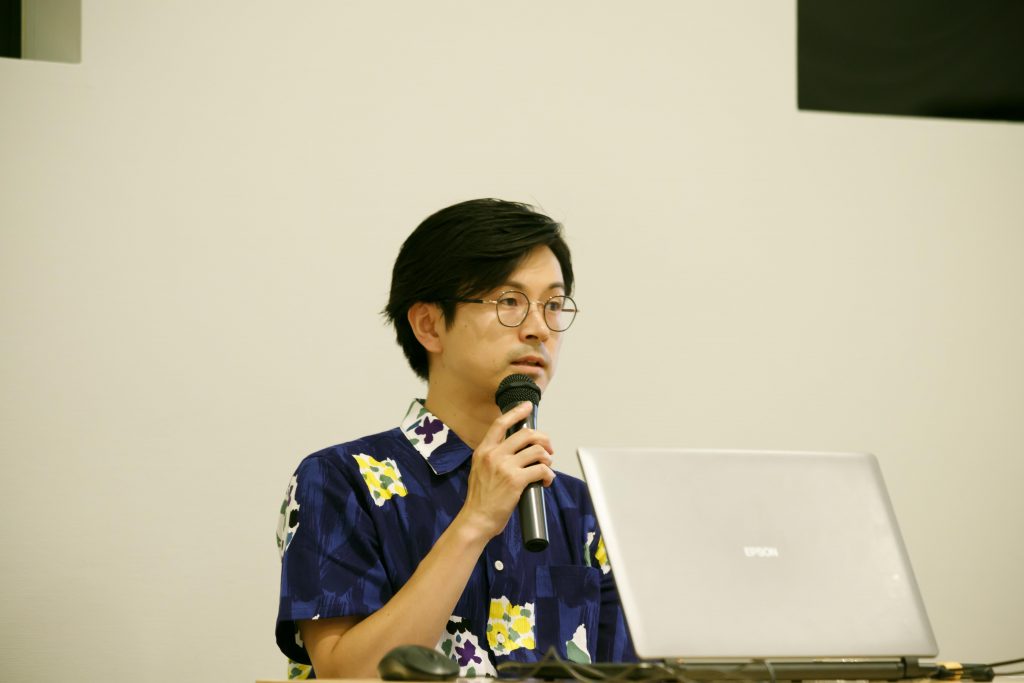
Yuasa : I don't really like Paris because it's so crowded (lol), but the only place I liked was the Orangerie Museum. As you all know, this is a museum built to exhibit the large decorative painting "Water Lilies." When I saw "Water Lilies" here, I felt it was more like an installation than a two-dimensional work. The space itself is art, and I really like this place.
I too have a strong desire to focus on flat surfaces, so I can empathize with Monet's worldview, which was based on his pursuit of the flat surface.
Matsunaga: In this exhibition, we have taken the approach of connecting the artists one-to-one, "Monet vs. Contemporary Artists." After looking around the exhibition again, I realized that it is fun to compare the works of contemporary artists, not Monet. So, I would like to ask the two of them about their impressions of each other's works.
You both share the technique of creating colors by mixing the three primary colors of RGB, i.e. red, green, and blue. Although printmaking and video are different media, how do you feel about creating images using the same process?
Yuasa: I think there are certainly things in common. Printmaking and photography have the same origins, and as media they are in the same family tree. However, the crucial difference between printmaking and photography or video is that once the size of a print is decided, it can never be changed. With photography and video, adjustments are necessary, but the size can be changed by using a screen or monitor. But with printmaking, if you want to make a 10-meter work, you have to carve 10 meters. The larger it is, the longer it takes. And for me, I feel that the process, the time itself, is important.
On the other hand, since the footage is shot after going to the location and making all the preparations, I think it is a work that is strongly related to time.
When I saw Mizuno Yuasa's print work "RGB" using a light box, I remembered that old LCD TVs looked like this. It's an interesting phenomenon. The human eye has a high information processing ability, so we try to link it to things we've seen before. I'm a video artist, so I guess I saw it as an LCD TV.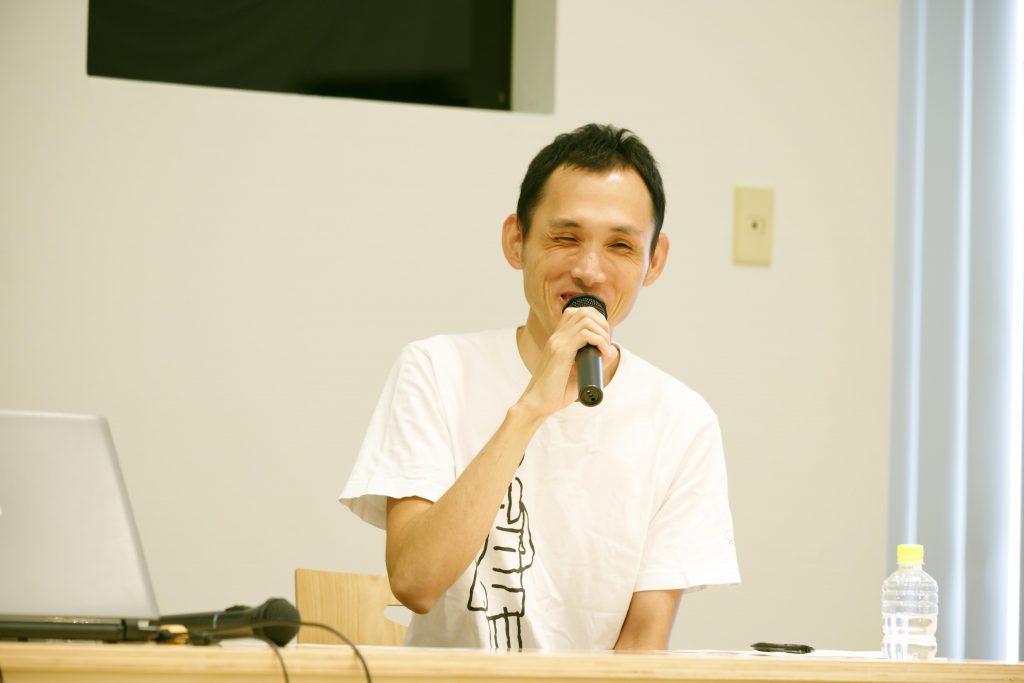
Matsunaga: I just realized that you both started out with monochrome works. This time, the aim was to highlight your connection with Monet, the painter of color, but what kind of creative transitions occurred that led to color being added to your works?
Yuasa: I'm not very good at using color, and at first I didn't know how to use it. I thought I could do it if I decided on the rules and the method, so I first tried using "CMYK" printing ink. The idea was good, but it's quite difficult to do it with water-based woodblock printing. With an inkjet digital printer, the ink colors are fixed, but with water-based woodblock printing, you have to mix the colors yourself. It took me a while to verify what concentration I should layer. But by establishing that method, I was finally able to use color. It feels like I've been freed from the spell.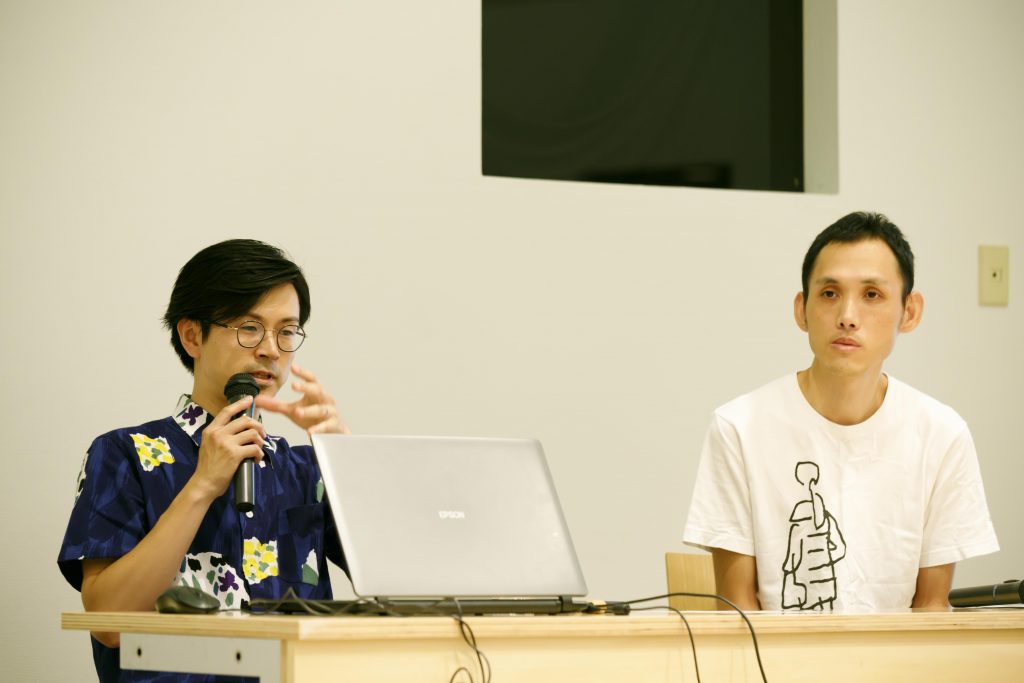
Mizuno : I still prefer monochrome to color. The images we usually see are in color, but the first monochrome work I made was a video that replaced this with monochrome, that is, one that removed unnecessary information. I shoot reflections, so I was interested in the impression that by removing unnecessary information, a virtual image looks like a real image.
However, I started to get bored of working in black and white all the time, or rather it started to become monotonous. To overcome this, I started to create color works.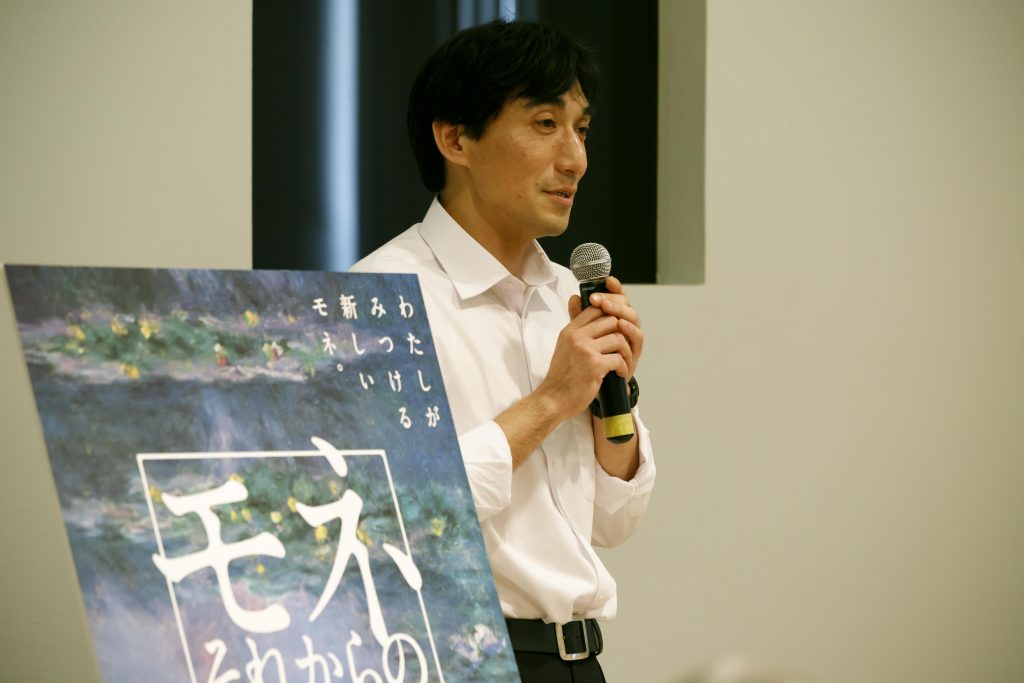
Matsunaga: I think we were able to express diversity in this exhibition. When you look at contemporary art, you might think, "I get this," or "That doesn't resonate with me." However, diversity based on personal sensibilities is natural, and that is the world of art. I think it is also the role of a museum to accept multifaceted perspectives and present the existence of different perspectives. That is what I wanted to express in the tagline for this exhibition, "The New Monet I Discover," so I hope you will use this exhibition as an opportunity to find "your Monet."
Thank you for today.
《Next Artist Talk》
Date and time July 29th (Sun) 14:00-15:30 *Doors open 13:30
Venue: Yokohama Museum of Art Circular Forum
Artists featured: Kouseki Ono, Mao Kodama
Interviewer: Shintaro Matsunaga (Chief Curator, Yokohama Museum of Art)
Capacity: 80 people (no prior application required, first come first served)
Participation fee: Free
Monet: 100 Years Later
Period: Until Monday, September 24, 2018 (substitute holiday)
Venue: Yokohama Museum of Art
Closed: Thursdays (open on August 16th)
Opening hours: 10:00-18:00 *Open until 20:30 on September 14th (Fri) and 15th (Sat)
(Last admission 30 minutes before closing)

